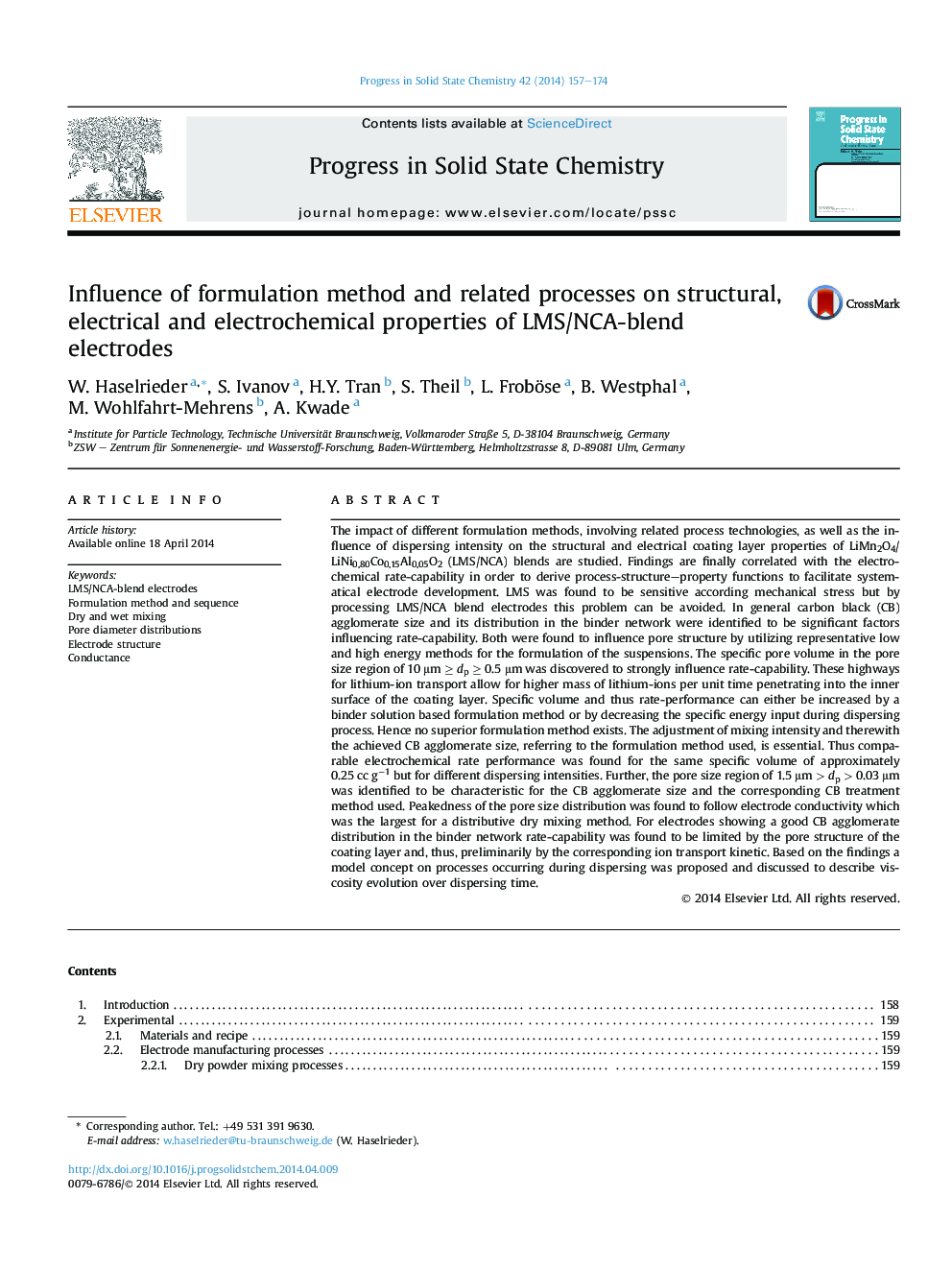| کد مقاله | کد نشریه | سال انتشار | مقاله انگلیسی | نسخه تمام متن |
|---|---|---|---|---|
| 1497829 | 993114 | 2014 | 18 صفحه PDF | دانلود رایگان |

The impact of different formulation methods, involving related process technologies, as well as the influence of dispersing intensity on the structural and electrical coating layer properties of LiMn2O4/LiNi0,80Co0,15Al0,05O2 (LMS/NCA) blends are studied. Findings are finally correlated with the electrochemical rate-capability in order to derive process-structure–property functions to facilitate systematical electrode development. LMS was found to be sensitive according mechanical stress but by processing LMS/NCA blend electrodes this problem can be avoided. In general carbon black (CB) agglomerate size and its distribution in the binder network were identified to be significant factors influencing rate-capability. Both were found to influence pore structure by utilizing representative low and high energy methods for the formulation of the suspensions. The specific pore volume in the pore size region of 10 μm ≥ dp ≥ 0.5 μm was discovered to strongly influence rate-capability. These highways for lithium-ion transport allow for higher mass of lithium-ions per unit time penetrating into the inner surface of the coating layer. Specific volume and thus rate-performance can either be increased by a binder solution based formulation method or by decreasing the specific energy input during dispersing process. Hence no superior formulation method exists. The adjustment of mixing intensity and therewith the achieved CB agglomerate size, referring to the formulation method used, is essential. Thus comparable electrochemical rate performance was found for the same specific volume of approximately 0.25 cc g−1 but for different dispersing intensities. Further, the pore size region of 1.5 μm > dp > 0.03 μm was identified to be characteristic for the CB agglomerate size and the corresponding CB treatment method used. Peakedness of the pore size distribution was found to follow electrode conductivity which was the largest for a distributive dry mixing method. For electrodes showing a good CB agglomerate distribution in the binder network rate-capability was found to be limited by the pore structure of the coating layer and, thus, preliminarily by the corresponding ion transport kinetic. Based on the findings a model concept on processes occurring during dispersing was proposed and discussed to describe viscosity evolution over dispersing time.
Journal: Progress in Solid State Chemistry - Volume 42, Issue 4, December 2014, Pages 157–174